Nokia Quality of Service
Last Update 6 days ago
Total Questions : 231
4A0-107 is stable now with all latest exam questions are added 6 days ago. Just download our Full package and start your journey with Nokia Quality of Service certification. All these Nokia 4A0-107 practice exam questions are real and verified by our Experts in the related industry fields.
On the Nokia 7750 SR, how many queues per FC are available for multipoint traffic within a VPLS on service ingress?
Which of the following self-generated traffic applications is considered “management” traffic, as opposed to “protocol” traffic?
On the Nokia 7750 SR, where can network-queue policies be applied? (Choose two)
Which of the following rate-limiting approaches are used on the Nokia 7750 SR? (Choose two)
Which of the following statements about the DiffServ and IntServ QoS models is FALSE?
At which points can traffic be marked or remarked on the Nokia 7750? (Choose two)
According to the SAP-ingress QoS policy shown, which packets have a higher priority to enter queue 2?
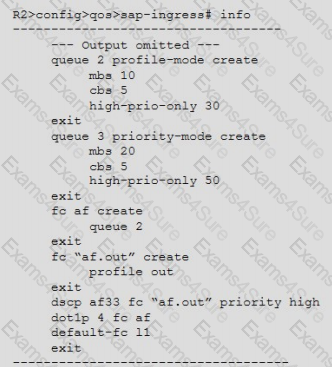
Which of the following traffic types is typically rate-limited by applying shaping and soft-policing on access ingress?
For which of the following queues does a Nokia 7750 SR allocate a separate hardware queue per each destination fast forward path complex (FFPC)?
Which of the following statements regarding buffer pool allocation are FALSE? (Choose two)
Which of the following is an example of something that CAN be done with hierarchical policing (CFHP) but CANNOT be done with standalone policers?
Which of the following statements describe the operation of WRED on the Nokia 7750 SR? (Choose three)
Click the exhibit button below.
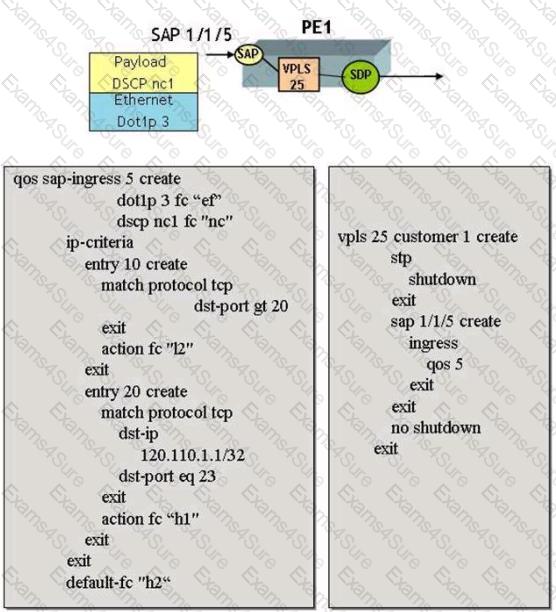
Based on the configuration shown below, name the forwarding class to be associated with a TCP packet encapsulated inside an Ethernet frame that arrives on SAP 1/1/5 with the following characteristics:
Destination IP address = 120.110.1.1
TCP port number = 23
DSCP value = nc1
Dot1pvalue = 3
Based on queue usage, which of the following QoS-policies when combined will allow queue rates to be dynamically allocated? (Choose two)
Which of the following is an advantage of using queue-groups on a service SAP?
On the Nokia 7750 SR, where can network-queue policies be applied? (Choose two)
Which of the following statements about configuring queues to use shared or reserved buffer space is FALSE?
Click the exhibit button below.
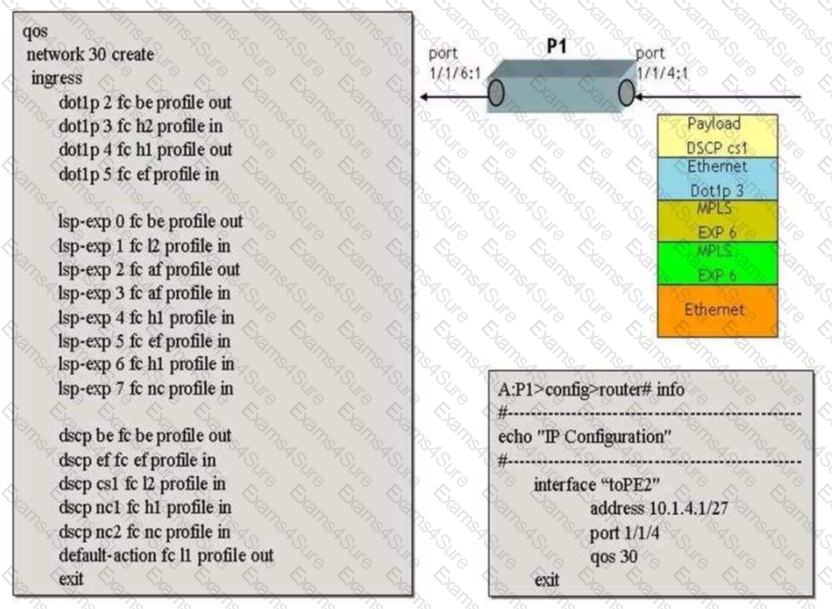
Based on the configuration of the network policy (below), what will be the forwarding class associated with a MPLS encapsulated customer packet that arrives on a dotlQ encapsulated network port 1/1/4:1 on P1 with the following characteristics:
EXP value = 6
DSCP value = cs1
Dot1pvalue = 3
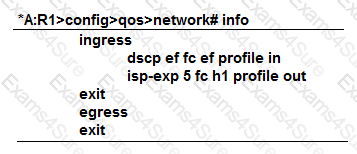
In the image shown above, the network QoS policy is applied properly to a Nokia 7750 SR. An MPLS packet with dot1p=1, EXP=4, and DSCP=AF is received. Which forwarding class and profile is assigned to this packet?
How many queues are available for use on service egress within a VPLS service?
Which of the following statements about the token buckets of a policer is TRUE?
An IOM3 card of a Nokia7750 SR is enabled with the default scheduler and the policy shown in the image is applied to an access port on this card. In which order will packets be scheduled out of the queues?
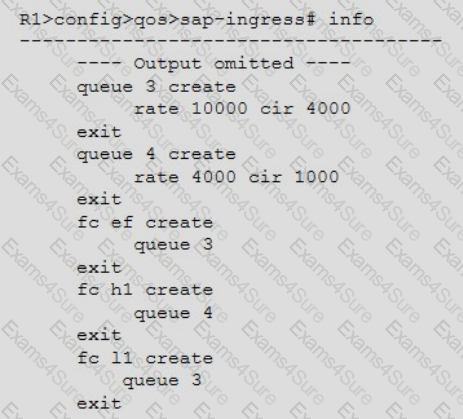
Which action should be taken to ensure that packets do not use the shared buffer space when put into a queue?
Which following statements about the four-step QoS process (classification, queuing, scheduling, and marking/remarking) executed for every packet entering a Nokia 7750 SR is TRUE?
A SAP-ingress policy is configured so that ping traffic is classified as FC L1 and mapped to queue 3; however, all traffic is placed in queue 1. What is the most probable reason for this?
Click the exhibit button below. Traffic arriving at router PE 1 is marked with a dot1p value of 4. Given the network policies applied on the routers in the diagram below, what is the EXP value of packets arriving at router PE 2?
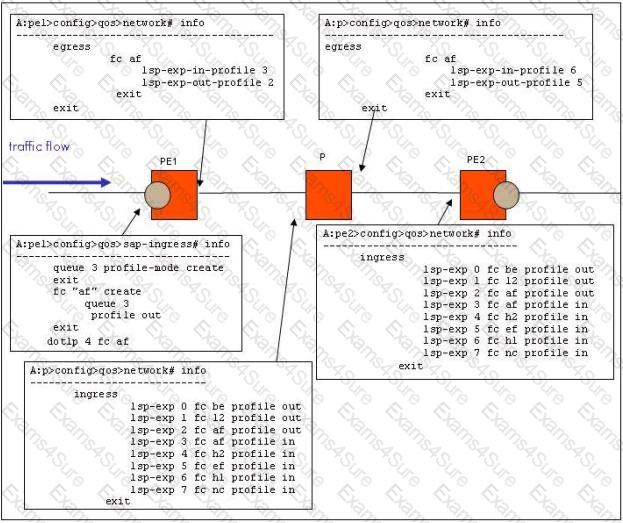
Note: Only relevant portions of the network policy are shown.
Which of the following statements about the default scheduler in the Nokia 7750 SR is TRUE?
Real-time rate limiting on the service ingress is a feature that performs_____________. Traffic above the defined PIR is ______________.
When using an egress port scheduler, which scheduling loop priority are orphaned queues serviced on?


TESTED 29 Apr 2024
Hi this is Romona Kearns from Holland and I would like to tell you that I passed my exam with the use of exams4sure dumps. I got same questions in my exam that I prepared from your test engine software. I will recommend your site to all my friends for sure.
Our all material is important and it will be handy for you. If you have short time for exam so, we are sure with the use of it you will pass it easily with good marks. If you will not pass so, you could feel free to claim your refund. We will give 100% money back guarantee if our customers will not satisfy with our products.